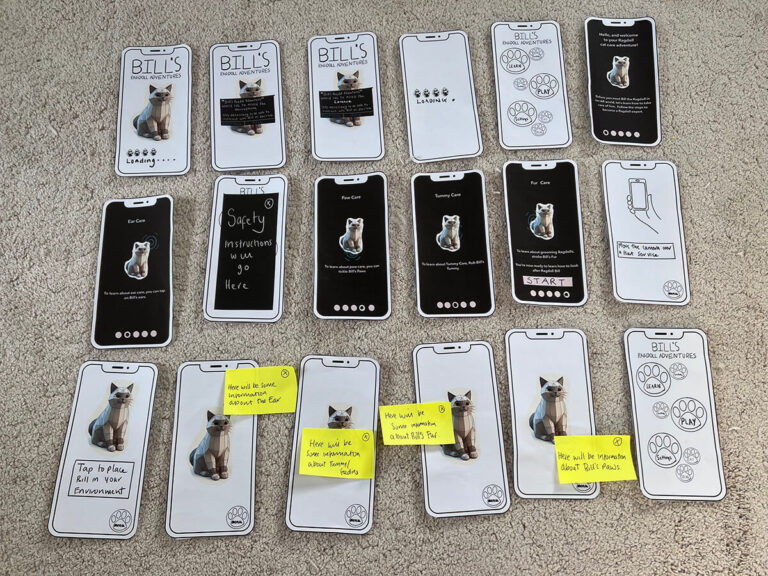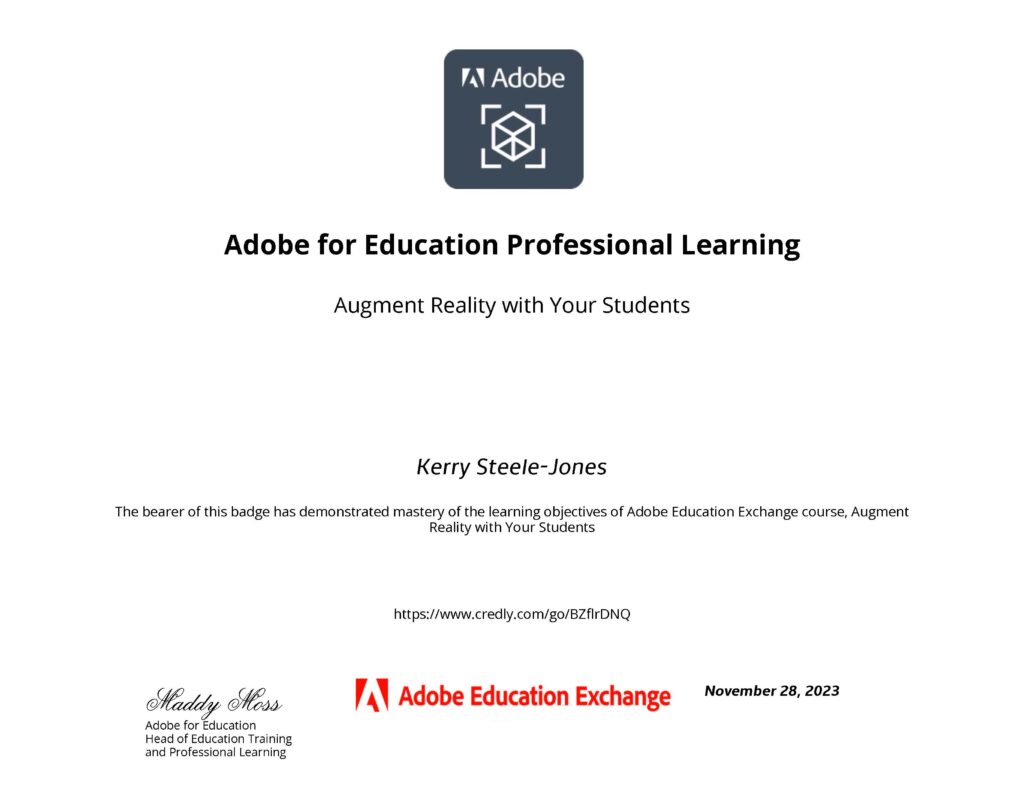A Dive into Chapter 1 of 'Hands-On Augmented Reality Development with Meta Spark Studio' by Jaleh Afshar
I just started reading the book ‘Hands-On Augmented Reality Development with Meta Spark Studio’ by Jaleh Afshar (Afshar, 2023), which marks the beginning of my journey with this technology. The author has emphasised the importance of truly understanding what Augmented Reality (AR) is all about. It is not just about the technology itself but its potential to change how we see and interact with the world around us. This foundational knowledge is crucial for me, especially as I envision sharing these insights with others in the future through teaching and training roles.
The ultimate display would, of course, be a room within which the computer can control the existence of matter. A chair displayed in such a room would be good enough to sit in. Handcuffs displayed in such a room would be confining, and a bullet displayed in such a room would be fatal. With appropriate programming such a display could literally be the Wonderland into which Alice walked.
(Sutherland, 1965)
After reading Ivan Sutherland’s “The Ultimate Display” (Sutherland, 1965), I was fascinated by how ahead of its time the concept was. Sutherland imagined computers as more than machines for work; he saw them as windows to new worlds. This early vision of what technology could achieve resonates with me, especially as I explore the possibilities of AR.
The idea that AR can extend our reality, allowing us to learn, play, and explore in ways we never could before, is exciting. It’s not just about adding digital layers to our world; it’s about opening doors to new experiences and understanding. The journey with AR is as much about imagination and creativity as it is about technology.
Examples of AR Experiences
Augmented Reality in Entertainment:
Pokémon GO stands out as a prime example. Its launch marked a pivotal moment, showcasing AR’s ability to entertain and motivate physical activity and real-world interaction. The game cleverly merges digital creatures with our physical environment, encouraging players to explore the outdoors in their quest for Pokémon. This aspect of Pokémon GO transcends mere gaming; it’s about fostering a more active lifestyle, a feat that has garnered widespread acclaim.
John Hanke, CEO of Niantic, has highlighted the game’s role in mobilising players to engage with their surroundings. However, a study conducted by Shahrokh Nikou, Julian Tarvoll, and Anssi Öörni from Åbo Akademi University titled “Impact of Playing Pokémon Go on Wellness” (Nikou, Tarvoll and Öörni, 2018) offers a more complex picture. While Pokémon GO has been praised for its potential to enhance physical activity, the study’s findings suggest that its impact on physical and social wellness may not be as significant as previously thought. Instead, the game has positively influenced players’ overall wellness through emotional well-being, challenging the conventional narrative and underscoring the multifaceted effects of AR in entertainment.


Niantic, Inc., the innovative force behind Pokémon GO, successfully replicated and adapted its AR framework to another universe with “Harry Potter: Wizards Unite”(nianticlabs.com, 2021). This transition from capturing Pokémon to casting spells in the wizarding world exemplifies how a proven AR model can be reimagined to cater to different interests and narratives. Both games encourage physical exploration, intertwining digital fantasies with real-world locations, yet offer distinct thematic experiences tailored to their respective fan bases.
The adaptability and success of Niantic’s AR framework in both “Pokémon GO” and “Harry Potter: Wizards Unite” highlight not only the potential of AR in creating immersive experiences but also the importance of developing models and frameworks that can be easily adopted by Small and Medium-sized Enterprises (SMEs) and higher education (HE) educators. This approach aligns closely with the objectives of my PhD work, which is centred on encouraging the adoption of existing accessible authoring tools.
The goal is to facilitate the seamless integration of AR into their operations and teaching methodologies without the necessity for in-depth technical expertise by leveraging the capabilities of no- or low-code AR authoring platforms that are already available, which means that SMEs can enhance their business offerings and customer experiences with AR. At the same time, educators can create immersive and interactive learning environments, all through intuitive, user-friendly platforms. This democratisation of AR technology through no or low-code authoring tools not only broadens the scope of AR applications in various fields but also ensures that the transformative benefits of AR are available to a broader audience, fostering innovation and engagement in both business and educational settings.
Transforming Customer Engagement with AR: Insights from Leading Brands
Augmented Reality (AR) is not just reshaping the gaming world; it’s revolutionising how brands engage with their audiences. Through the lens of two distinct campaigns by Sokos and Marks and Spencer, we can see the powerful impact of AR in marketing.
Sokos: A Makeup Wonderland
Finnish department store chain Sokos leveraged AR to enhance its Christmas cosmetics campaign. By developing an AR filter that allowed customers to try different makeup looks virtually, Sokos created a unique shopping experience.
Promoted through Facebook and Instagram ads, this innovative approach led to a 69% reduction (www.facebook.com, n.d.) in cost per acquisition and significant lifts in campaign awareness and purchase intent. Sokos’ success underscores the potential of AR to provide immersive experiences that drive sales and engagement.
The AR filter was central to a larger Christmas marketing initiative to boost cosmetics sales and was integrated with traditional and digital marketing efforts to create a cohesive campaign. By allowing customers to try on makeup looks virtually, Sokos not only provided a fun and interactive shopping experience but also drove engagement across platforms.
The AR filters were promoted through Facebook and Instagram ads, linking to Sokos’ e-commerce site where customers could explore products further and make purchases. This multi-channel approach ensured that the AR experience complemented other campaign elements, such as in-store promotions and online advertising, creating a unified message that encouraged the exploration and purchase of cosmetics during the festive season.
View video example here [Facebook Website]: https://www.facebook.com/business/success/sokos

Marks and Spencer: Festive Fairy Magic
British retailer Marks and Spencer (M&S) introduced an interactive AR game during the Christmas season, building on the popularity of their TV campaign featuring a Christmas fairy. Users could play as the fairy, collecting M&S Christmas food items and blending entertainment with product discovery.
This creative use of AR resulted in a 2.5X increase in brand quality perception and a more cost-effective brand awareness campaign (www.facebook.com, n.d.). M&S’s campaign highlights how AR can bring brand narratives to life, creating memorable consumer connections.
Marks and Spencer’s AR game was part of a comprehensive holiday campaign that included television commercials, in-store decorations, and online content. The AR experience built on the narrative established in the TV ad, extending the magical story of the Christmas fairy into an interactive format that customers could engage with directly on their mobile devices. By incorporating the AR game into its wider marketing strategy, M&S was able to offer an immersive extension of the fairy tale, encouraging deeper engagement with the brand.
The campaign also utilised video ads to increase awareness of the TV commercial and its hero products, while location-based ads targeted individual store locations, inviting customers to visit in person. This integrated approach ensured that the AR component enhanced the overall campaign, providing a memorable and engaging way for customers to connect with the M&S brand during the holiday season.
As I embark on this journey into Meta Spark AR, I’m inspired by the transformative potential of this technology to reshape our world and enhance our experiences. From visionary concepts like “The Ultimate Display” to immersive gaming experiences like Pokémon GO and Harry Potter: Wizards Unite, AR has emerged as a powerful tool for creativity, learning, and engagement.
The examples of marketing campaigns by leading brands like Sokos and Marks and Spencer demonstrate how AR is revolutionising customer engagement and driving brand awareness in innovative ways. These real-world applications highlight the versatility and impact of AR across various industries.






